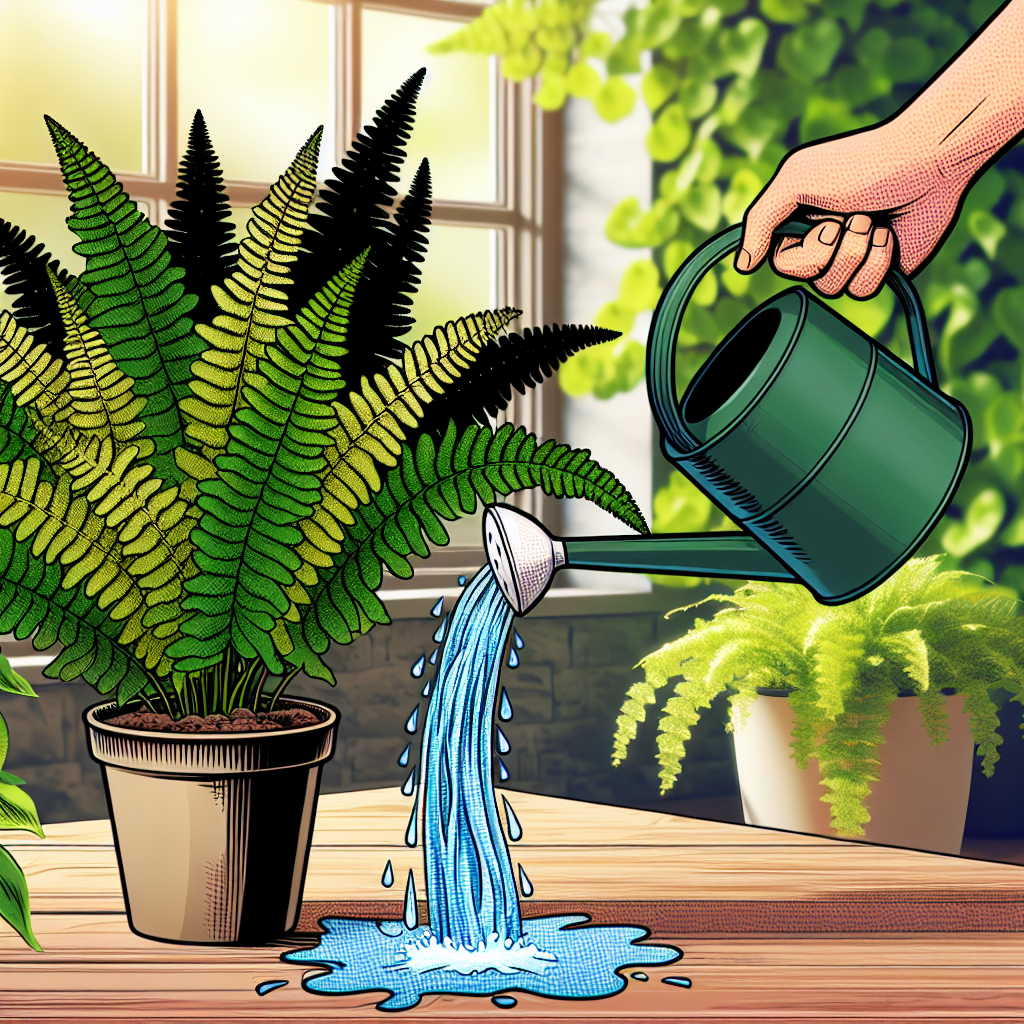Table of Contents
When it comes to indoor gardening, one of the most popular and timeless plant choices is the fern. With its lush green fronds and delicate appearance, ferns can add a touch of nature and beauty to any indoor space. However, in order to keep your ferns healthy and thriving, it is essential to understand the importance of proper watering techniques. Watering your ferns correctly can be the difference between a vibrant, flourishing plant and a wilted, unhappy one.
In this article, we will explore the significance of proper watering techniques when growing ferns indoors. From understanding the unique water needs of ferns to learning how to water them effectively, we will provide you with all the information you need to ensure your indoor ferns thrive and flourish.
The Water Needs of Ferns
Before delving into proper watering techniques, it is crucial to understand the water needs of ferns. Ferns are unique plants that prefer consistently moist soil but do not like to sit in standing water. Overwatering or underwatering can both be detrimental to ferns, so finding the right balance is key.
Choosing the Right Pot and Soil
When growing ferns indoors, selecting the right pot and soil can greatly impact their water retention and drainage. Opt for a pot with drainage holes at the bottom to prevent water from pooling at the roots. Additionally, choose a well-draining potting mix specifically formulated for ferns or mix your own using materials such as peat moss or perlite.
Watering Frequency
Ferns typically require more frequent watering than other houseplants due to their preference for moist soil. However, it is essential not to overwater them as this can lead to root rot. To determine when your fern needs water, check the top layer of soil with your finger – if it feels dry to the touch, it’s time to water. Remember that environmental factors such as temperature and humidity levels can also impact how often you should water your fern.
Watering Technique
When watering your fern, aim to thoroughly moisten the soil without soaking it. Water slowly and evenly around the base of the plant until water begins to drain out of the bottom of the pot. Be sure not to let excess water accumulate in saucers or trays as this can lead to root rot. If using tap water, let it sit for 24 hours before watering your fern as this allows any chlorine or fluoride in the water to dissipate.
Misting
In addition to watering from below, misting your fern’s leaves can help increase humidity levels around the plant – something many indoor environments lack. Use a spray bottle filled with room temperature distilled or filtered water and lightly mist your fern’s fronds every few days during drier months or if you notice browning leaf tips.
FAQ (Frequently Asked Questions)
Q: How do I know if I am overwatering my fern?
A: Signs of overwatering include yellowing fronds, wilting leaves, moldy soil surface, or standing water at the bottom of the pot. To correct overwatering issues, allow your plant’s soil some time to dry out before watering again.
Q: Can I use tap water on my indoor fern?
A: While tap water is generally safe for most plants, some indoor plants may be sensitive to chlorine or fluoride present in tap water – including many varieties of ferns. Letting tap water sit out for 24 hours before using it on your plants allows these chemicals time to dissipate.
Q: Should I fertilize my indoor fern when I am watering?
A: It’s best not fertilize during watering as this could result in nutrient build-up which may harm your plant over time Instead opt for monthly fertilization during spring & summer by diluting a balanced liquid fertilizer according package instructions













